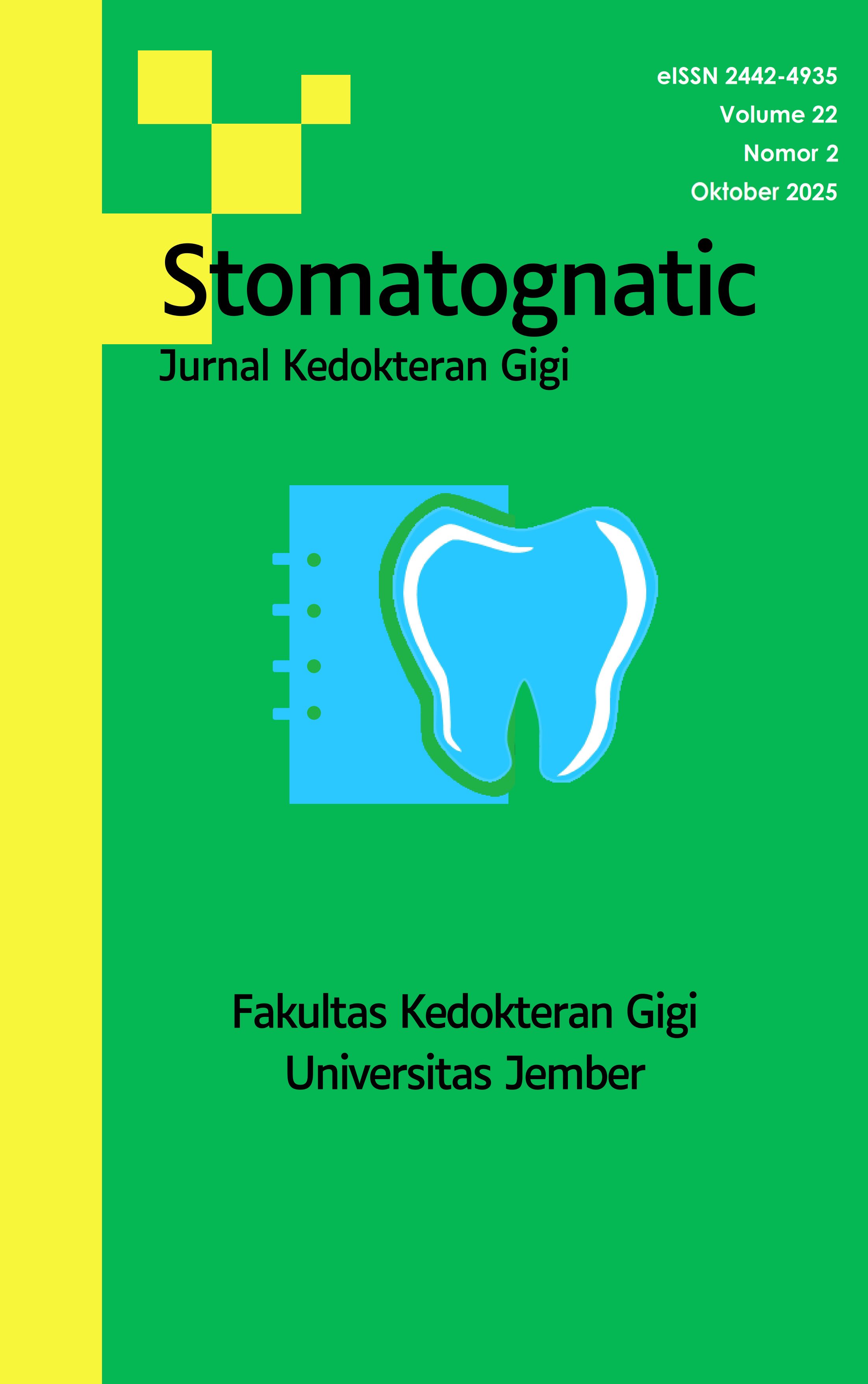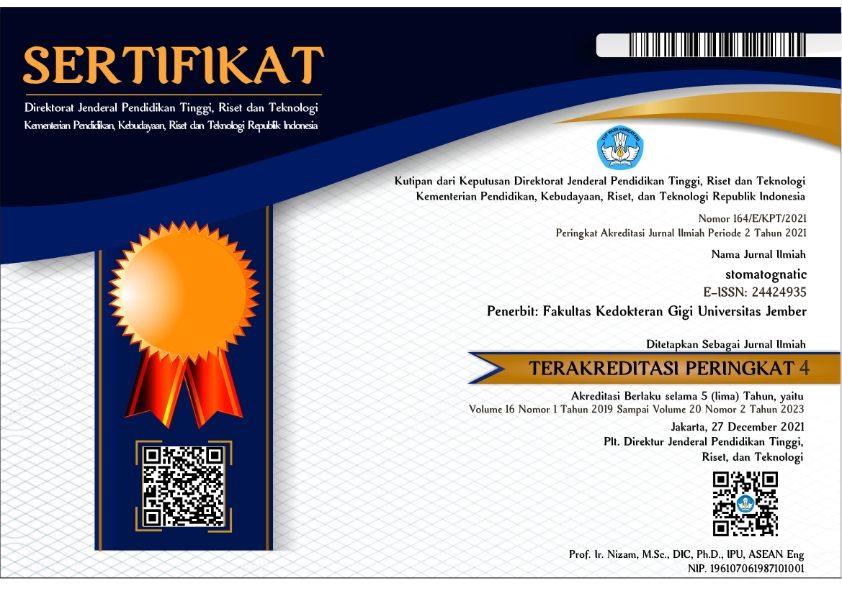Manajemen Kegawatdaruratan Trauma Gigi Anterior dengan Fraktur Mencapai Pulpa pada Anak Usia 3 Tahun: Laporan Kasus
DOI:
https://doi.org/10.19184/stoma.v22i2.53737Abstract
Anterior dental trauma in preschool-aged children is a common emergency condition, frequently resulting from physical impact during daily activities. Complex crown fractures involving the pulp in primary teeth cause a high risk of infection, prolonged pain, psychological disorders, and potential implications for the development of permanent teeth. This article aims to depict the clinical emergency management of a complex crown fracture involving vital pulp in a primary anterior tooth of a 3-year-old child, focusing on behavioral management and selecting an appropriate pulp therapy. A three-year-old girl, accompanied by her mother, complained of a broken upper right front tooth after a fall three days earlier and reported having difficulty eating and often crying suddenly due to a toothache. The management of a complex crown fracture through a vital pulpectomy procedure. The Tell-Show-Do (TSD) distraction technique was obtained before administering infiltration anesthesia and intrapulpal injection. Root canal irrigation was performed using NaOCl and CHX. The root canals were filled with a mixture of Ca(OH)₂ and ZnO, followed by a strip crown. The treatment outcome was successful, including atraumatic pulp extirpation without complications and a cooperative response patient. The management of complex crown fractures in primary teeth in preschool children requires a multidimensional approach, encompassing clinical, psychological, and educational aspects. Vital pulpectomy with optimal pain control, appropriate behavioral management, and parental education is a key factor in achieving successful treatment and a favorable long-term prognosis.







